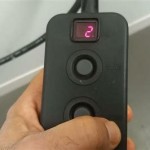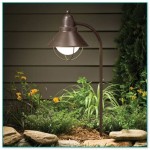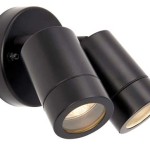Are LED Lights Suitable for Outdoor Use?
When it comes to outdoor lighting, choosing the right type of light fixture is crucial. LED lights have emerged as a popular option due to their energy efficiency, longevity, and durability. However, it is essential to consider various essential aspects to determine whether LED lights are suitable for your specific outdoor needs.
This article will delve into the essential aspects you need to consider when evaluating the suitability of LED lights for outdoor use. By understanding these key factors, you can make an informed decision that meets your lighting requirements and ensures the optimal performance of your LED lights.
Essential Aspects to Consider
1. Weather Resistance
Outdoor lighting fixtures must withstand harsh weather conditions, including rain, snow, dust, and extreme temperatures. LED lights designed for outdoor use should have an IP (Ingress Protection) rating that indicates their level of protection against these elements. Choose lights with an IP rating of at least IP65, ensuring they are dust-tight and protected against water jets.
2. Durability
Outdoor lights are often subjected to physical impact and vibration. Look for LED lights made from durable materials such as aluminum or stainless steel. These materials provide excellent resistance to corrosion and impact, ensuring the lights can withstand the rigors of outdoor environments.
3. Lumen Output
The brightness of LED lights is measured in lumens. Determine the appropriate lumen output based on the size of the area you need to illuminate and the desired level of brightness. Consider the surrounding light sources and the purpose of the lighting to choose the optimal lumen output.
4. Color Temperature
The color temperature of LED lights refers to the perceived warmth or coolness of the light emitted. Choose a color temperature that complements the ambiance you wish to create. Warm white (2700K-3000K) provides a cozy and inviting atmosphere, while cool white (4000K-5000K) offers brighter and more invigorating illumination.
5. Beam Angle
The beam angle of LED lights determines the width of the light beam. Choose a narrow beam angle for focused lighting or a wide beam angle for general illumination. Consider the location and purpose of the lights to select the appropriate beam angle.
6. Energy Efficiency
LED lights are renowned for their energy efficiency. They consume significantly less energy compared to traditional lighting sources, resulting in cost savings on your electricity bills. Look for LED lights with high lumen-per-watt (lm/W) ratings, indicating greater energy efficiency.
7. Controls and Customization
Outdoor lighting often requires control and customization options. Consider LED lights with features such as dimming capabilities, motion sensors, or remote control options. These features enhance the functionality and convenience of your lighting system.
Conclusion
Determining the suitability of LED lights for outdoor use involves considering essential aspects such as weather resistance, durability, lumen output, color temperature, beam angle, energy efficiency, and control options. By carefully assessing these factors, you can choose LED lights that meet your specific requirements, ensuring optimal performance, longevity, and reduced maintenance costs.

Outdoor Led Lighting Exterior Light Fixtures E Conolight

Taking Your Outdoor Lighting To Another Level With Dynamic Led Lights Inaray Design Group

The 3 Best Smart Outdoor Lights For Backyards Of 2024 Reviews By Wirecutter

Led Meteor Lights E14 100cm 4w Warm Light Suitable For Outdoor Use Ip44

Led Lamp E27 Par38 Spotlight Outdoor Decorative Lighting For Indoors Outdoors

6w Led Spotlight For Outdoor Ip64 With Cable And Spike

Led Floodlight 150w Spotlight Ip65 Waterproof Outdoor Lighting Square Lamp Garden Flood Light China Made In Com

Led Lamp E27 Par38 Spotlight Outdoor Decorative Lighting For Indoors Outdoors

Led Lamp For Outdoor Use With Solar Panel Idfdesign

Led String Lights 7x0 2w 6 8 Meters Warm Light Suitable For Outdoor Use Ip44 24v
Related Posts







